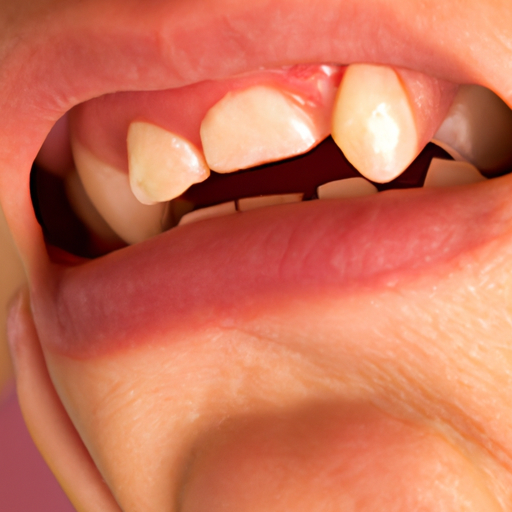Wisdom teeth, also known as third molars, are notorious for causing pain, discomfort, and a host of other dental problems. If you’ve ever experienced the agony of a wisdom tooth eruption or wondered about the necessity of their removal, you’re not alone. In this comprehensive article, we will delve into the world of wisdom tooth removal, exploring everything from the symptoms and causes to the diagnosis and treatment options available. Whether you’re currently dealing with wisdom tooth pain or simply curious about this dental phenomenon, this article aims to provide you with the knowledge and understanding you need. So, sit back, relax, and prepare to embark on a journey that will demystify wisdom teeth and guide you towards a smoother wisdom tooth removal experience.
1. Understanding Wisdom Teeth: Symptoms, Causes, and Diagnosis
Wisdom teeth, also known as third molars, are the last set of teeth to erupt in the oral cavity. While some individuals may have no problems with their wisdom teeth, for many, these molars can cause a great deal of discomfort and require removal.
Symptoms of problematic wisdom teeth can vary from person to person. Some individuals may experience pain or tenderness in the back of the mouth, swelling around the gums, or even jaw stiffness. In more severe cases, wisdom teeth may cause headaches, difficulty opening the mouth, or an unpleasant taste when biting down.
The causes of wisdom tooth problems are primarily due to their late eruption. By the time they begin to grow, the mouth is often already full of teeth, leaving little space for these additional molars. Consequently, wisdom teeth may become impacted or partially erupted, causing pain and discomfort. Additionally, the angle at which they grow can also contribute to complications.
Diagnosing problematic wisdom teeth typically involves a thorough dental examination and the use of dental X-rays. During the examination, the dentist will assess the positioning of the wisdom teeth, check for signs of infection or decay, and evaluate the overall oral health. X-rays provide a clearer image of the teeth and their roots, allowing the dentist to determine the extent of the problem and the best course of action.
In some cases, wisdom tooth extraction may be recommended even before symptoms arise. This proactive approach is often preferred as it can help prevent potential future complications. However, if symptoms or complications are present, extraction becomes necessary to alleviate pain and prevent further damage to the surrounding teeth and gums.
Wisdom tooth removal is typically performed by an oral surgeon or a dentist experienced in oral surgery. The procedure is usually done under local anesthesia, with the option of sedation for those who may feel anxious or have a more complex case. The surgeon will make an incision in the gum tissue to access the tooth and may need to remove a small portion of bone to extract it fully. After the tooth is removed, the incision is closed with dissolvable stitches, and the patient is provided with post-operative care instructions.
While wisdom tooth extraction may sound daunting, it is a common and relatively safe procedure. With proper diagnosis and timely treatment, individuals can avoid unnecessary pain and potential complications associated with problematic wisdom teeth. Regular dental check-ups and consultations with a dentist or oral surgeon can help ensure the best course of action for maintaining optimal oral health.
2. Exploring Treatment Options: Surgical Extraction and Alternatives
Wisdom tooth removal is a common dental procedure that many individuals undergo, usually during their late teens or early twenties. While some people may never experience any issues with their wisdom teeth, others may face complications that necessitate their removal.
When it comes to treatment options for problematic wisdom teeth, surgical extraction is the most common approach. This procedure involves the removal of one or more wisdom teeth using a surgical approach, often performed by an oral surgeon or a dentist with specialized training. Surgical extraction is generally recommended when the impacted tooth is fully or partially covered by gum tissue or when it has grown in an abnormal position.
During the surgical extraction, the dentist or oral surgeon will administer local anesthesia to numb the area around the tooth. In some cases, general anesthesia may be used to put the patient to sleep during the procedure. Once the anesthesia takes effect, an incision is made in the gum tissue to expose the tooth and any bone that may be blocking its removal. If necessary, the tooth may be divided into smaller pieces to facilitate its extraction. Finally, stitches may be required to close the incision.
While surgical extraction is the standard treatment for impacted wisdom teeth, there are alternative options available depending on the specific case. One such alternative is a coronectomy, which involves removing only the crown of the tooth while leaving the root intact. This procedure is often considered when the wisdom tooth is located close to important nerves or structures, and the risk of nerve damage is high. By removing only the crown, the potential for nerve injury is significantly reduced while still resolving any associated symptoms or complications.
Another alternative to surgical extraction is watchful waiting. This approach is typically recommended when the impacted wisdom tooth is not causing any immediate problems. The dentist or oral surgeon may choose to monitor the tooth periodically through regular check-ups and X-rays to ensure that it is not causing any damage to adjacent teeth or leading to the development of oral infections. Watchful waiting allows for a conservative approach, avoiding unnecessary surgical intervention unless complications arise.
In some cases, the dental professional may also suggest non-surgical treatment options. These options may include antibiotics to treat any existing infections or anti-inflammatory medications to reduce swelling and pain temporarily. However, it is important to note that these non-surgical treatments are typically considered temporary measures and may not provide a long-term solution for impacted wisdom teeth.
Ultimately, the choice of treatment option depends on various factors, including the position of the impacted tooth, the potential risks involved, and the patient’s overall dental health. It is essential to consult with a dental professional who can assess the specific case and provide personalized recommendations. By exploring the available treatment options and discussing them with a qualified dental practitioner, individuals can make informed decisions regarding the management of their
3. Aftercare and Recovery: Tips for a Smooth Wisdom Tooth Removal Experience
After undergoing wisdom tooth removal, it is crucial to follow proper aftercare instructions to ensure a smooth recovery process. This section will provide some essential tips to help individuals recover comfortably and minimize any potential complications.
1. Follow the dentist’s instructions: Your dentist will provide specific instructions tailored to your situation. It is essential to adhere to these guidelines precisely to promote healing and prevent any post-operative complications. These instructions may include how to manage pain and swelling, when and how to clean your mouth, dietary restrictions, and when to schedule a follow-up appointment.
2. Manage pain and swelling: It is normal to experience some discomfort and swelling after wisdom tooth removal. To alleviate pain, your dentist may prescribe pain medication or recommend over-the-counter pain relievers such as ibuprofen. Applying an ice pack to the affected area for the first 24 hours can also help reduce swelling. Avoid using heat packs or consuming hot beverages, as they can exacerbate swelling.
3. Control bleeding: It is common to experience slight bleeding after the procedure. Your dentist will provide instructions on how to control bleeding, such as biting down on gauze pads or tea bags to apply gentle pressure to the extraction site. Change the gauze pads as directed by your dentist and avoid vigorous rinsing or spitting, as this can dislodge the blood clot and prolong bleeding.
4. Maintain oral hygiene: While it is crucial to avoid rinsing or spitting forcefully immediately after the procedure, you should resume gentle oral hygiene practices as soon as your dentist advises. Brush your teeth carefully, avoiding the surgical area for the first few days. After the initial healing period, gently rinse your mouth with saltwater or an antimicrobial mouthwash recommended by your dentist to promote healing and prevent infection.
5. Adapt your diet: Stick to a soft or liquid diet for the first few days after surgery. Opt for nutritious foods like soups, smoothies, yogurt, and mashed potatoes to ensure a balanced diet while minimizing discomfort. Avoid hard, chewy, or spicy foods that can irritate the extraction site or get stuck in the socket.
6. Take it easy: Allow yourself time to rest and recover after the surgery. Engage in light activities and avoid strenuous exercises for the first few days, as physical exertion can increase bleeding and delay healing. Remember to keep your head elevated while sleeping, using an extra pillow or two to reduce swelling.
7. Look out for complications: While most wisdom tooth removal procedures go smoothly, it is essential to be aware of any signs of complications. Contact your dentist immediately if you experience severe pain, excessive bleeding, persistent swelling, fever, or difficulty swallowing or breathing.
By following these aftercare tips, patients


